THE HARLEM BROWNSTONE LOTTERY (1982)
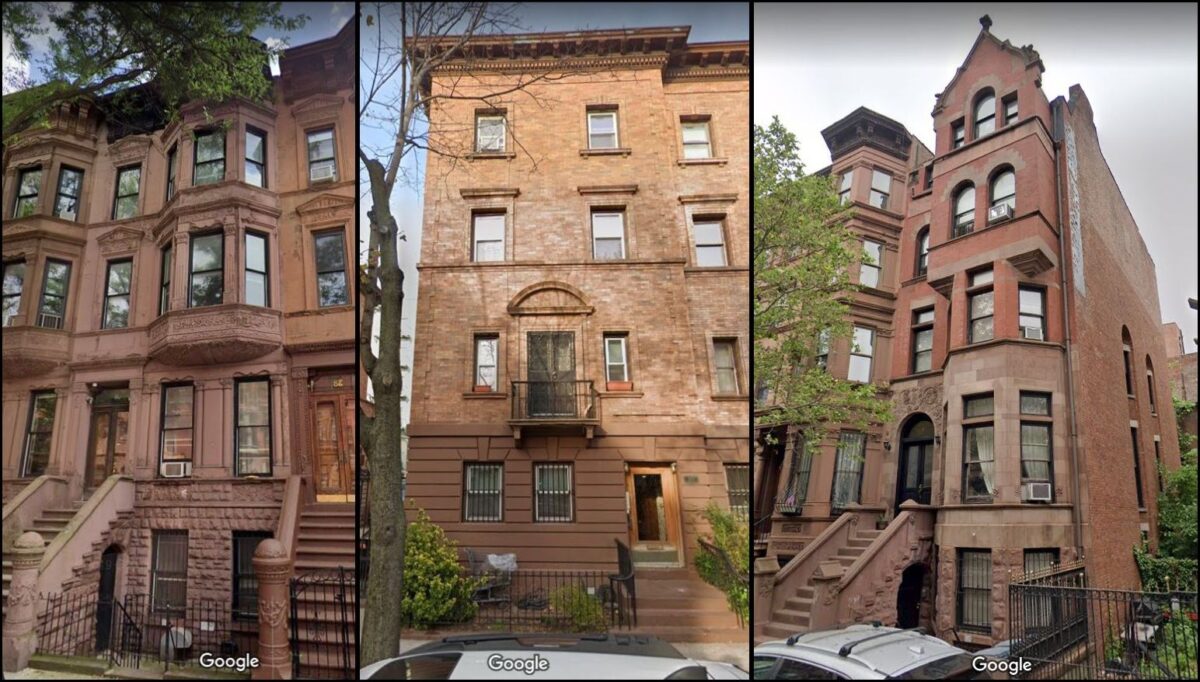
Brownstone Detectives investigates the history of our clients’ homes.
The story you are about to read was composed from research conducted in the course of one of those investigations.
Do you know the history of YOUR house?
********************************************************************************************************************************
In 1981, New York City felt it could no longer wait for gentrification to arrive in Harlem.
The city’s finances were bleeding revenues through the decade-long erosion of its tax-paying property base. There were so many foreclosed brownstones on the city’s delinquency rolls that the earth beneath those structures had literally begun to lie fallow.
And the City, as the owner of more than half of Harlem’s brownstone stock at this point (which included about 300 brownstones), was looking for ways to staunch the bleeding and bring its brownstone patients back from the brink of an eternal abyss.
It was thus that, in an attempt to return that life’s blood to these lifeless patients, the City decided to find an innovative way to put owners back into Harlem’s glorious but abandoned and deteriorating brownstones.
They held a lottery.
THE HARLEM BROWNSTONE LOTTERY
Settling upon a lottery as the means of distributing the old brownstones to middle-class Harlem families, the city’s housing department announced an application plan.
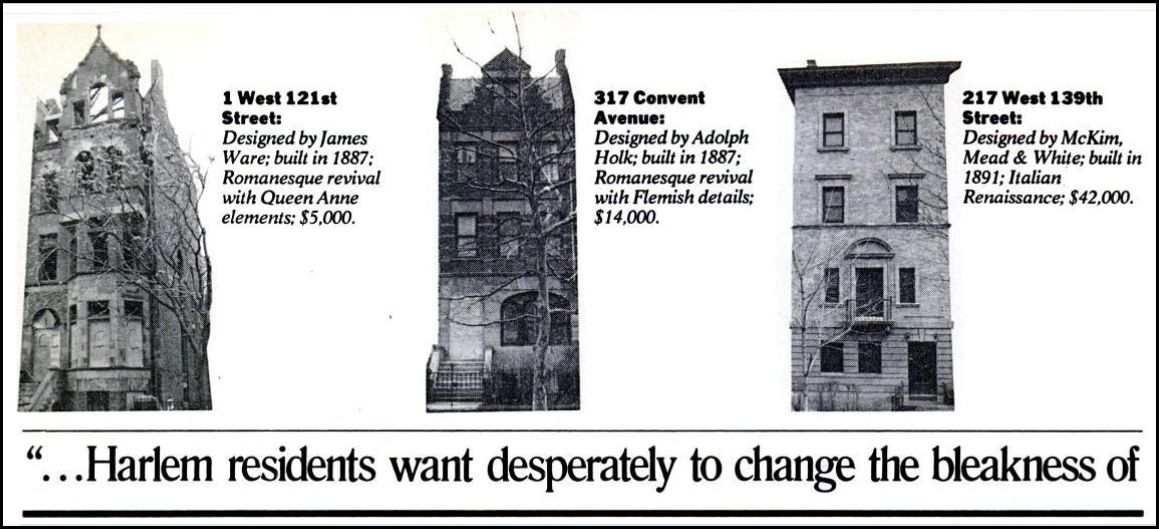
The City would accept applications from (mostly) Harlem residents who had an annual income of at least $20,000. Each applicant would have a chance to buy – at a steep discount – one of 12 Harlem brownstones.
City officials decided to fix the prices of the brownstones at between $5,000 and $42,000, rather than auction them to the highest bidder.
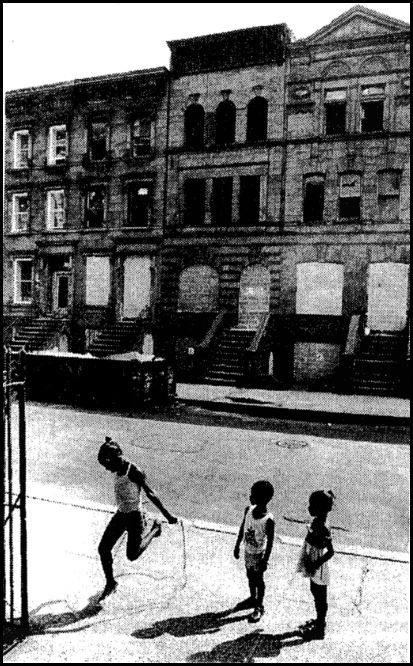
“In addition, many of the winners could expect low-interest rehabilitation loans as well as 7 1/2 percent 20-year mortgages.”
Furthermore, the city maintained throughout the process, as a guiding principle, that they would avoid any “displacement of low-income, minority residents,” noted the New York Times.
“‘Harlem is vulnerable to takeover by whites,’ Robert Davis of the city’s Department of Housing Preservation and Development (HPD) told the Times, adding that blacks in the area had an ‘understandable paranoia about losing out.'”
The Harlem brownstones in question, all three-story and four-story buildings, sat within an area bounded by 110th Street on the south, 5th Avenue on the east, 155th Street on the north, and St. Nicholas Avenue on the west.
So, with the lottery set, in February of 1982, the City held its function at the newly constructed Aaron Davis Hall on the main campus of City College. There, before an audience of 300 expectant applicants, they selected 12 new brownstone owners.
WHO WERE THE LOTTERY APPLICANTS?
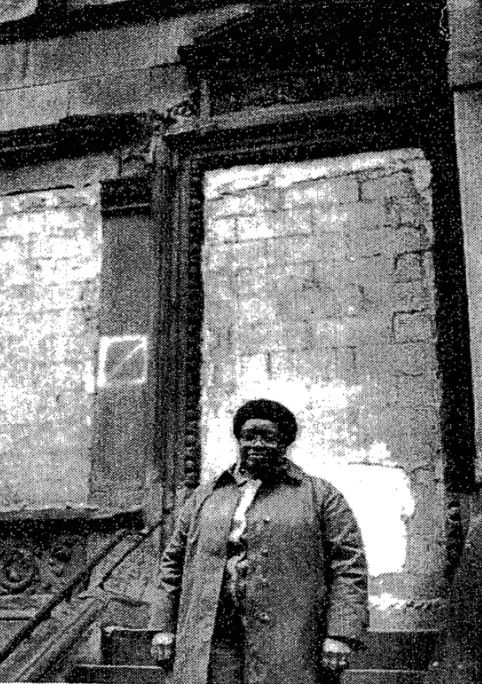
Of course, the city hadn’t accept applications from every Tom, Dick or Harry who applied. They had to ensure that the applicants could afford to own the brownstones.
All of the 2,059 entrants in “had to have an annual income of $20,000,” Anthony B. Gleidman, Commissioner of HPD, declared. But the applicant pool, he felt, told him something very important about the idea to give away brownstones by lottery.
“We’ve established the fact that there are thousands of middle-income families within and outside of Harlem who want to live and own property here. Now we can go to the banks, the insurance companies and the pension funds and say: ‘Look at this. This means you can safely invest in housing in Harlem.'”
Gleidman was not simply trying to unload properties onto private citizens. He knew that homeownership was important to addressing the condition of “blighted” neighborhoods.
And in Harlem’s case, the city owned a whopping 60 percent of section’s residential properties. Nearly 300 brownstones and townhouses and about 1,400 apartment buildings had been lost to the city by private owners through tax foreclosures.
OPPOSITION WAS “IMMEDIATE—AND HOSTILE”
As can be guessed, there was a variety of reasons that people came down on the side of opposition to the lottery. Some felt it wasn’t fair enough to the people of Harlem. Some felt it was too fair to the people of Harlem. Some decided that the lottery was the problem and it wasn’t fair to “give” properties to some people and not to others. Some decided that it put white people at a disadvantage.
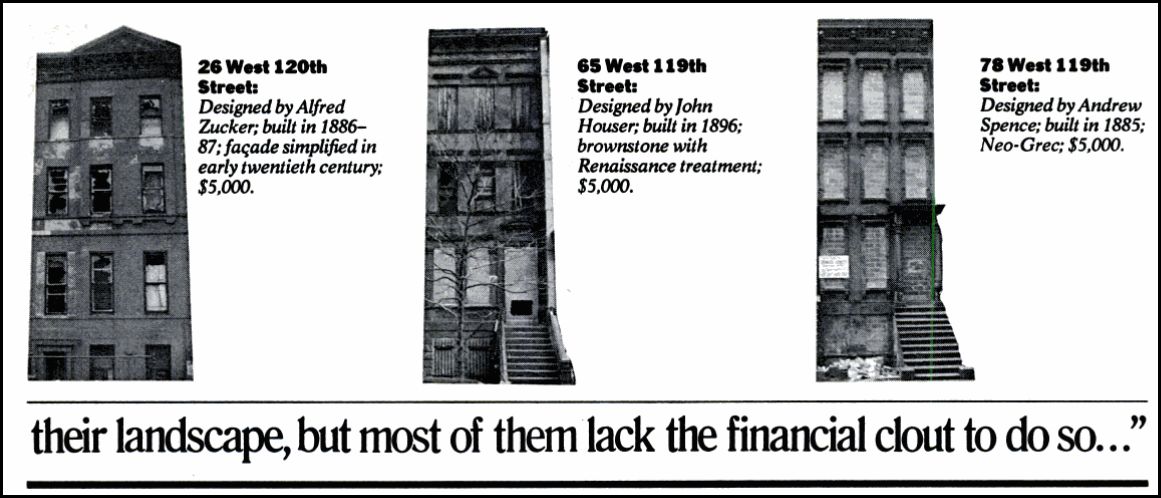
And then there were those who simply felt that, since the city was so in need of a boost to its finances, the brownstones should be sold to the highest bidders—no matter who those bidders were.
It was the people of Harlem, however, whose community within which the fight over these “12 abandoned brownstones” was taking place, who had the most to say. They knew that their section of New York City “was a prize awaiting the pleasure of the city’s white real estate developers,” and they wanted desperately to avoid that outcome.
According to the New York Times, there was a “broadly held view that Harlem has tremendous potential for revitalization.
City officials, housing experts and real estate figures all cited the same reasons: Harlem’s convenient location just north of Central Park, its well laid-out grid of streets and broad boulevards, its extensive public transit network, the distinctiveness of many of its residential buildings, and the growing demand for housing in Manhattan.
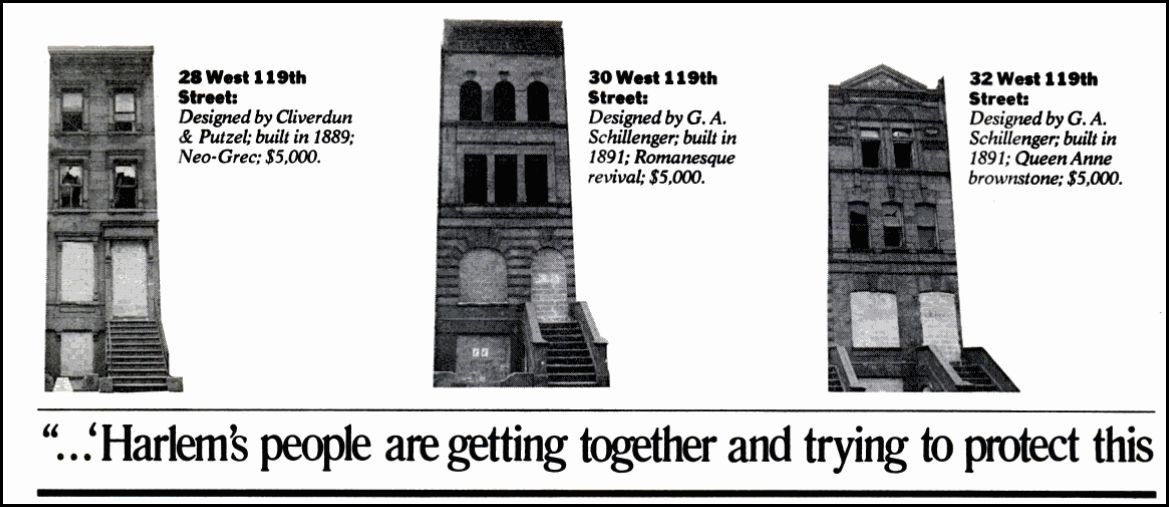
“There is no question gentrification is coming to Harlem,” said George Sternlieb, a nationally known housing expert. “The logistics there are better than anywhere else in the country where gentrification has occurred.”
So, in an attempt to satisfy Harlem residents, it was decided that although the program would accept applications from outside the area, the lottery would be heavily weighted towards applicants who not only fit the criteria, but lived within Harlem’s boundaries. Every successful Harlem applicant would have their names placed into the lottery three times to give them a higher chance of success.
Although this did not satisfy everyone, the city went along with their lottery.
And one day in February of 1892, they pulled 12 names out of a hat.
LOTTERY WINNERS SELECTED, THEN THE WAIT…
In the end, seven of the 12 winners were Harlem residents or from neighborhoods that abut Harlem — Washington Heights, East Harlem and Manhattan Valley. Eleven of the 12 were nonwhite.
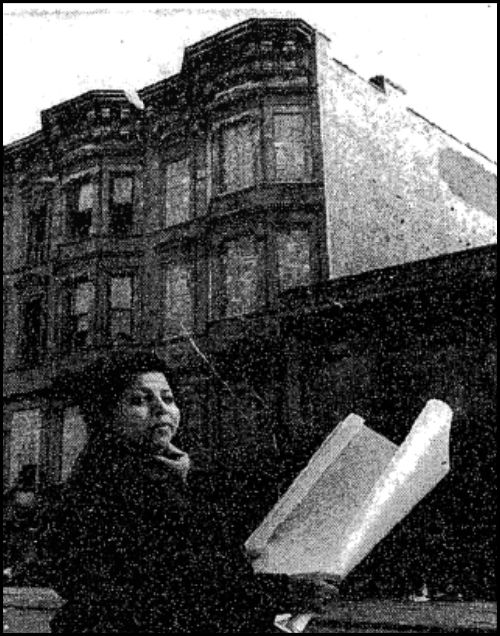
All were ready to work with the city to begin renovations on their new brownstone houses. The city, though, had their steps that needed to be take in order to properly ensure that the finances, the licenses, and everything involved in renovating brownstone within an historic district was done properly.
The risk involved in underwriting the purchase and renovation of housing, they noted, could be substantial. And it led, unfortunately, to a good deal of red tape. And while the financing step had been worked out, a year after the brownstones were awarded, the city was still struggling to move past the objections of a state agency, the State Office of Parks, Recreation and Historic Preservation.
This state agency had called for the preservation of the interiors of the landmark buildings in accordance with Federal guidelines. The Federal guidelines had to be followed, they noted, because Federal funds were being used.
After an inspection of all of the abandoned buildings in the lottery, though, the state determined that they had deteriorated “to such a degree that they’ve lost their historic and architectural integrity,” said Albert E. Caccese, the agency’s deputy commissioner.
As such, Caccese said, “they can be gutted.”
“We’re delighted,” Robert K. Davis, deputy commission of HPD, commented. “I believe we have removed the last obstacle.”
THE 12 BROWNSTONES – A POSTSCRIPT
Today, none of the brownstones awarded within the lottery are in the shape they were in in 1982 before the lottery took place. Most of them had been vandalized, details stolen or destroyed, and then, as they were a hazard to the neighborhood (attracting gangs, the homeless, adventurous children), their windows and doors were cinder blocked up.
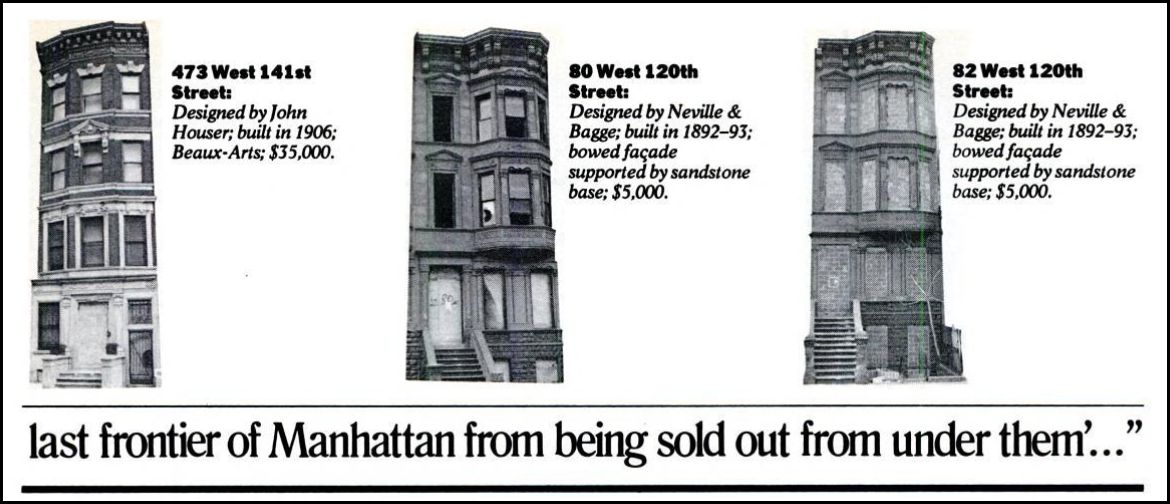
Although a few were lost soon after being rewarded, they have all – as with the star of Harlem, itself – risen in value.
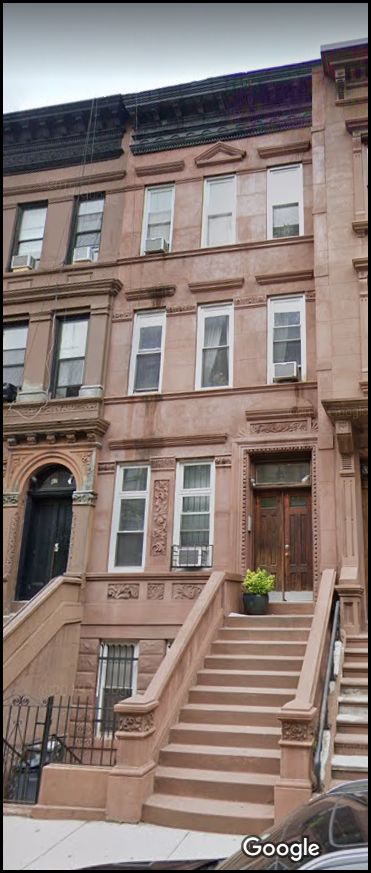
The addresses of the brownstones that were owned by the city and won in the lottery by private citizens (along with their status) are as follows (click any address to see what that property looks like today):
1 West 121st Street – no record of conveyance in 1982/3
317 Convent Avenue – sold in 2007
217 West 139th Street – sold 2016
26 West 120th Street – sold 1999
65 West 119th Street – still owned
78 West 119th Street – sold 1994
28 West 119th Street – sold 2018
30 West 119th Street – lost to foreclosure 1992
32 West 119th Street – lost to foreclosure 1988, vacated 1989
473 West 141st Street – still owned
80 West 120th Street – sold 2009
82 West 120th Street – still owned
Although the city required that awardees live in their homes at least three years after taking possession, most remained the homes of the awardees for at least a decade after taking possession, nine staying beyond 2000. Two of the homes were lost to foreclosure. Several are still in the possession of the awardees or their families.
———————————————————————————————————————–
 Brownstone Detectives is an historic property research agency. Our mission is to document and save the histories of our clients’ homes. From our research, we produce our celebrated House History Books and House History Reports. Contact us today to begin discovering the history of your home.
Brownstone Detectives is an historic property research agency. Our mission is to document and save the histories of our clients’ homes. From our research, we produce our celebrated House History Books and House History Reports. Contact us today to begin discovering the history of your home.